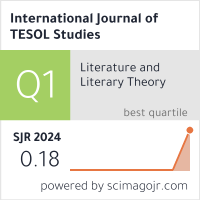2632-6779 (Print)
2633-6898 (Online)


Scopus
Ulrich’s Periodicals Directory (ProQuest)
MLA International Bibliography
MLA Directory of Periodicals
Directory of Open Access Journals (DOAJ)
QOAM (Quality Open Access Market)
British National Bibliography
WAC Clearinghouse Journal Listings
EBSCO Education
ICI Journals Master List
ERIH PLUS
CNKI Scholar
Gale-Cengage
WorldCat
Crossref
Baidu Scholar
British Library
J-Gate
ROAD
BASE
Publons
Google Scholar
Semantic Scholar
ORE Directory
TIRF
China National Center for Philosophy and Social Sciences Documentation
Donghong Liu
Central China Normal University, China
Fang Wan
No. 1 Junior Middle School of Suzhou New District, China
Abstract
Although many studies have been done based on the Toulmin model, only a few involve EFL students at different proficiency levels. The present study compares the English argumentative essays of first-year students with those of the fourth-year students in terms of the use of Toulmin elements and argument complexity. Altogether 62 timed argumentative writings were selected from Spoken and Written English Corpus of Chinese Learners. Toulmin elements, namely Claim, Subclaim, Data, Warrant-Backing, Counterargument-claim, Counterargument-data, and Rebuttal were investigated, as well as Data length, Warrant-Backing length, argument depth and width. The results show that the two groups of essays have almost no difference in the use of Toulmin elements except Warrant-Backing, and that the fourth-year students perform better in argument complexity. It is concluded that the use of the Toulmin elements cannot clearly differentiate proficient writers; however, argument complexity showed improvement.
Keywords
Toulmin model, argumentation, persuasive, argument complexity